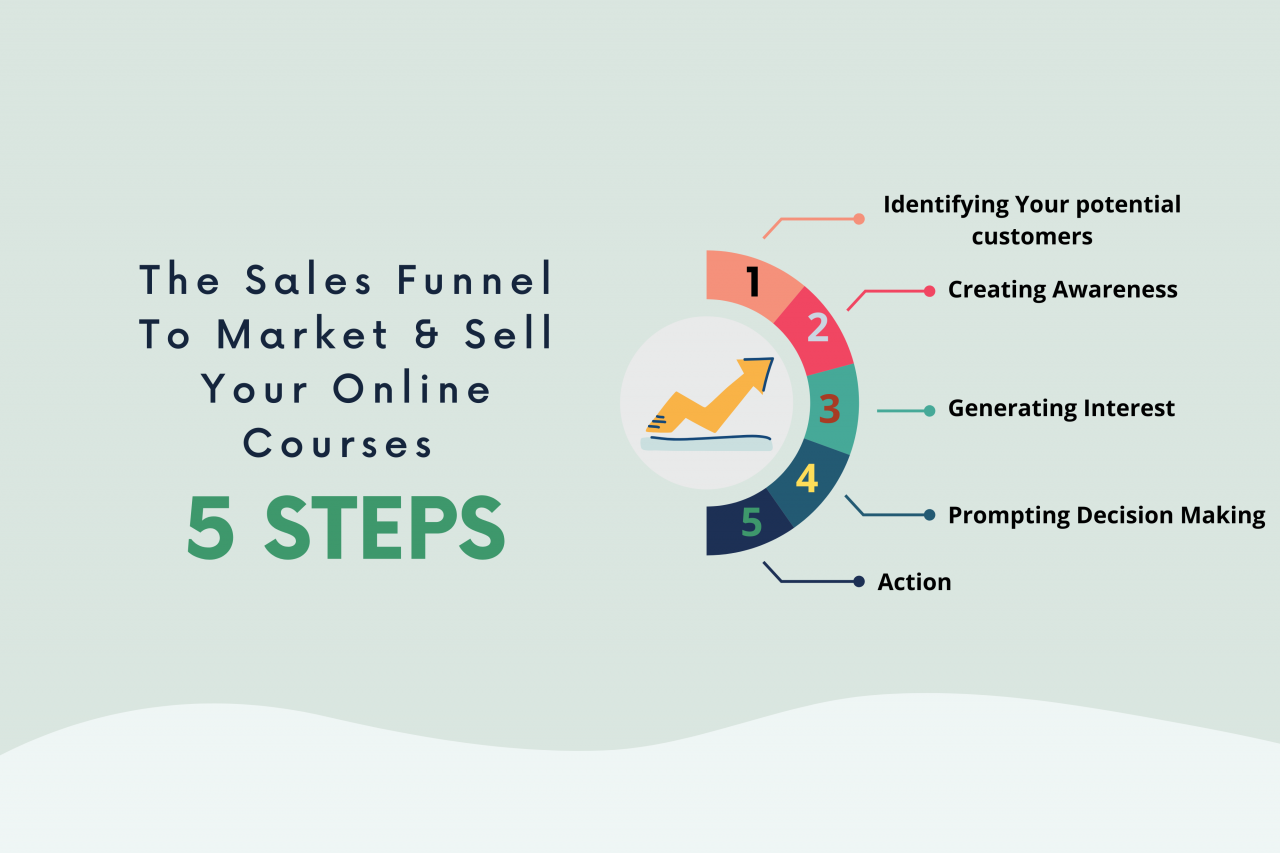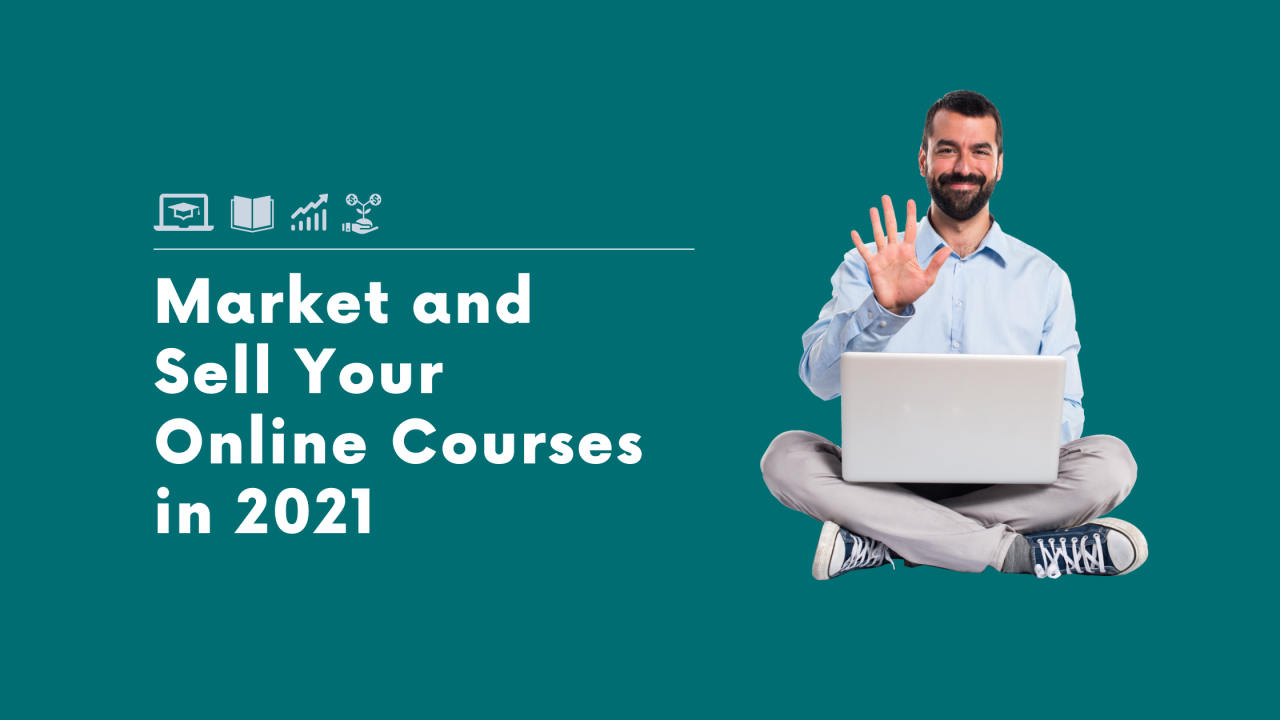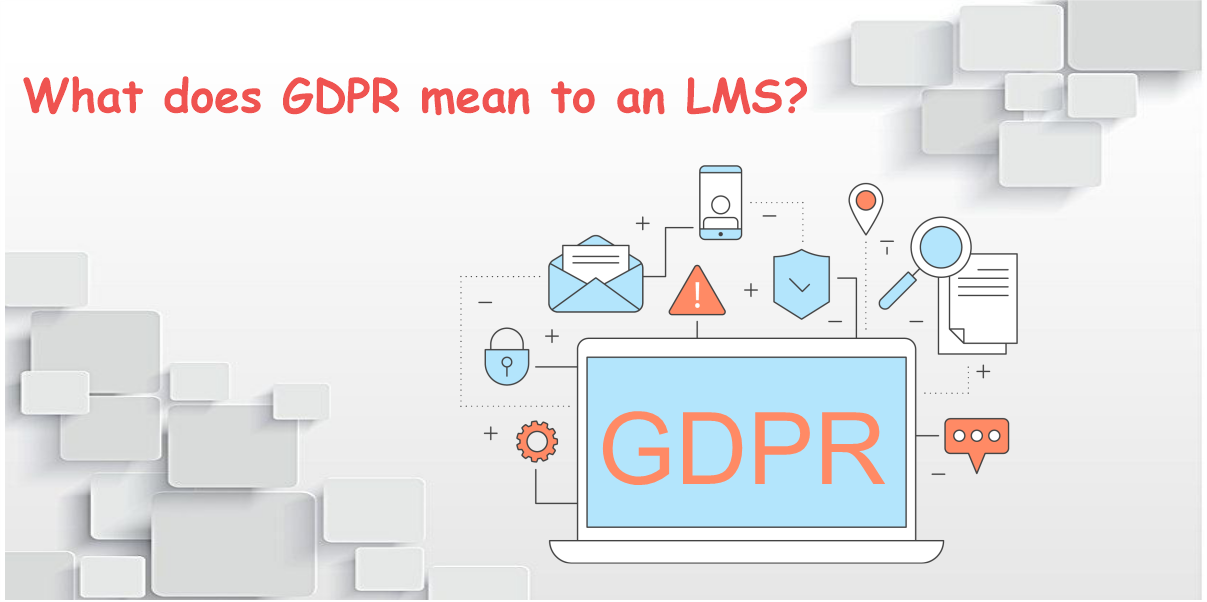This article is for those who plan on creating & selling online courses in 2021 but are clueless on how to efficiently market them. What most people are not aware is that irrespective of how good your course is or how much value it imparts, it does not make a difference unless you market your courses properly. We will discuss in detail what exactly you can do to make the most out of your courses in 2021 using the best marketing techniques.
Are you one of those teachers who spend hours, days, weeks, & months crafting your course to perfection and are excited about the sales that you are going to make in a couple of days?
Have you launched your course to realize that you are not getting students who are buying them?
Then you have what we call "Course Creator's " Nightmare. We are happy that you now have landed at the right place as we are going to help you learn more about how to properly package and market your courses
The thumb rule in online courses business is to not to just follow the "create it and users will enroll" approach.
Due to courses being online the outreach for the students is more and hence they are able to leverage the internet to see if there are other instructors offering the same course as you.
So the bottom line is "If you need your course to do well in the market, you need to market it well." That's been what we have seen with our clients and as expressed by our product manager.
How profitable your courses business turn out is primarily depended on how well you market it
- Priya Nair, Product Manager, BrainCert
What do we mean by Marketing your Course?
Contrary to popular opinion, marketing isn't just about advertising your products (courses).
Rather, marketing must be focused on identifying that specific niche of customers who are unaware of the potential benefits from your courses, creating awareness among them & converting them into potential customers.
In short, Marketing spans the entire process of delivering a product or service to a customer: from choosing which products to sell and where to sell them, to how to price and promote them.
You can't expect this to happen overnight and this is where you need a well-laid plan & a hell of a lot of patience.
So how do you do it?
It all starts with having a well-laid plan which marketers call the sales funnel.
The sales funnel to market & sell your online courses
A sales funnel is essentially a multi-step path you take your potential customers through before they decide whether to buy from you or not. It starts with identifying your potential customers, creating awareness among them on how your course can be of help, generating interest, and making them buy from you. To simplify the process the sales funnel has been split up into 5 stages

Before we dive into these stages individually, there is something you should know about selling online courses
"People don't want to buy YOUR online courses!"
Yeah, you heard us right.
When students are looking for online courses they have a lot of options that were not available for in person. So for your course to speak to them you need to be able to show the highlights as to why this meets their needs.
A student when searching for a course looks at this from this perspective What can they potentially benefit from the course? Or Why should they invest their time in your course versus the other offerings that the internet has provided them? Whether the course is priced within their budget.
Give students answers to these questions, you are through the first hurdle!
Now let's move over to the sales funnel and the stages and how to put them to use.
Step 1: The 3-step process to identify your potential customers
In short, your potential customers are those who will benefit the most from your course. But how do you actually prepare a list of potential buyers?
We have devised a 3-step process which you can follow to identify your potential buyers. Here goes it
- Course Benefits and Differentiators Have a clear understanding of your course, what it offers, and how it can potentially benefit your students. For this, you need to step into your students' shoes and analyze the course from their perspective. Those learners who you think will be benefited from your course are your potential buyers.
- Competitor research: This is probably the easiest way to identify your potential customers. Try to identify the market/niche of learners your competitor is catering to & add them to your list of potential customers.
- Market Insights: Always keep track of what is happening in your field by following news articles, blogs and discussion forums. Although this is time-consuming, this is the best way to know whether your course is relevant to what people are looking for to have your potential target audience.
Once you have the list of potential customers ready, identify the exact void your course can cater to in the market & how your potential customers can benefit from it.
Find answers to these questions, and you will have a list of your Unique Selling Points (USPs). It is these USPs you need to make your potential customers aware of.
Which brings us to our second stage in the sales funnel, Creating Awareness.
Step 2: Content Marketing – The key to creating awareness among your potential customers
The key to creating awareness among your potential customers is to have well-crafted content. Content that addresses the difficulties your buyers are facing, scopes for improvement, questions they might have, and more.
Create well-crafted & unique content that specifically addresses the questions, concerns & requirements of you potential customers and distribute them across platforms where they are active.
How to Create compelling content for content marketing?
Not just for course, for every content marketing effort, you should follow the 90+10 formulae. Which means that 90% of your content should be valuable, imparting knowledge to your audience, and addressing their unique questions & needs. Only 10% of your content should be about you and your course.
Some effective content marketing techniques to sell your online course are
- Creating content on topics your potential buyers are interested in.
- Create the content on the questions your potential buyers are asking you, in forums, and social media.
- Create free eBooks and other downloadable materials for your potential customers. Having these will help you project yourself as an authority and develop trust.
- Do some competitor research to know what your competitors are talking about and develop content taking new angles on those topics.
- Distribute content where your potential customers are most active. Depending on your course material and targeted customers you can distribute your content on blogs, Facebook, Instagram, LinkedIn, Pinterest, Quora, Discussion forums, etc.
Irrespective of whether you choose to create written, audio or video content, ensure that you don't sound salesy. Because in the end, all that your potential customers care about is how your course is going to benefit them.
Now that we have good content and potential clients it brings us to the third stage in the sales funnel, Generating interest.
Step 3: Generate interest among your potential buyers – Give them solutions
Now that you have helped your potential buyers identify a problem it's time to show them how exactly can you be of help & how your eLearning course imparts value to them.
In general, learners look for the Return on Investment (ROI) and the time worthiness of your course before they purchase them. This is where your compelling contents that specifically address these concerns (ROI & Time worthiness) will generate interest.
Make sure you are always highlighting the value proposition and differentiators as that is what everyone is looking for when you have gained their interest and attention. As you have their attention you now need to throw them some titbits to continue to keep that interest level going.
Step 4: Prompting Decision Making – Let your buyers have a sneak peek
The best way to prompt decision making is to let the users have a sneak peek into your course contents. This will help your potential buyers verify the claims you had previously made & prompt them to buy from you.
One way to go about is this to give free previews to some chapters to your targeted buyers. The advantage of free previews is that you also get to target those learners who are indecisive as to whether this course is for them or not. With these free previews you can also get them to commit and you will have some new loyal lifelong learners!
Other ways to provide them with sneak peaks are free trials on your website or video snippets on social media platforms where your buyers spend time. Ensure that you include your contact information and a way for them to purchase your full course if they are interested.
Another way to prompt decision making is to showcase reviews and testimonials from successful learners. Knowing how the course has benefitted other learners, will prompt new buyers to buy from you.
This brings us to the last step in the sales funnel Action.
Step 5. Action – Give your Customers a Seamless Checkout Process
The last thing you want is the buyers changing their decision at the checkout page. Just because a buyer has reached the end of the funnel doesn't mean they will buy from you.
This is where ensuring a seamless checkout experience & having a compelling checkout page is mandatory.
Now that your potential buyer has become your customer, you should ensure that they have a flawless experience with you. This is where hosting your course materials on a reliable eLearning platform provider can come in handy.
5 ways to pull your potential buyers to your sales funnel?
- Organic traffic from search engines: You need to invest a lot of time & money to get organic traffic to your courses page from search engine. While it's time-consuming, it can prove to be beneficial in the longer run.
- Paid traffic from search engines: Though it takes time for your courses page to rank on the SERP, you can run paid ads on search engines. While it can cost you some money, it's worth investing in if you have the budget.
- Email Marketing: Send out cold emails to your potential buyers about your course.
- Affiliates, referral traffics, guest blogs, & partners
- Traffic from Social media: If your course material primarily caters to customers in the B2C domain, you should focus on getting traffic from social media. The best way to promote your courses on social media is to run paid campaigns.
We hope that you found this article helpful. We would also love to hear any suggestions you might have on marketing online courses. Feel free to drop a comment below or reach out to us to share any suggestions/tips you might have.
Also, if you are planning to start an online courses business, now is the best time. Reach out to us as we currently have an offer for our first time subscribers.










